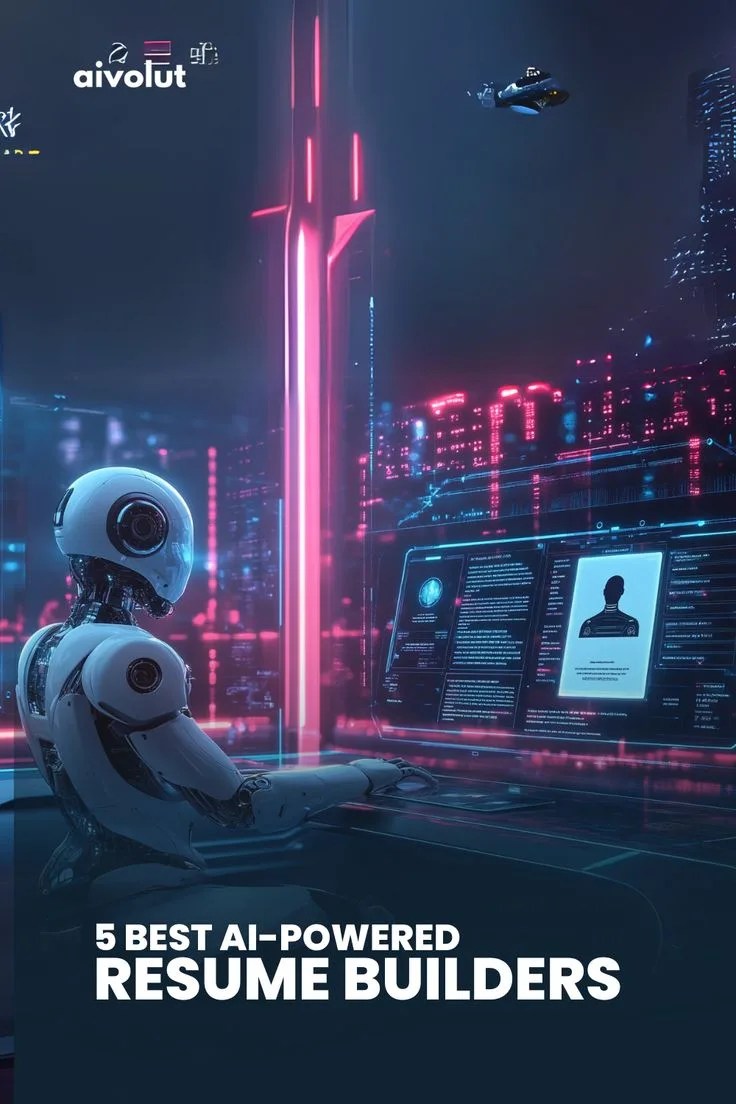Table of Contents
- Introduction: Stand Out in an AI-Powered Hiring World
- 1. Use a Clean, ATS-Friendly Format
- 2. Sprinkle in Strategic Keywords
- 3. Highlight Tangible Achievements, Not Just Tasks
- 4. Lead with a Clear Professional Summary
- 5. Show Your Tech Stack, Certifications & Projects
- 6. Keep It to One Precise Page (Two Only if Senior)
- 7. Proofread with Precision
- 8. Optimize Formatting for Humans & Machines
- 9. Leverage Resume Templates & Tools
- 10. Tailor for Every Role
- FAQs
- ✅ In Summary
- Final Thoughts
Introduction: Stand Out in an AI-Powered Hiring World
In 2025, your resume is more than a summary of experience—it’s your first handshake with AI, your brand story, and your best shot at bypassing the robot recruiter gatekeepers. With applicant tracking systems (ATS) and AI-powered hiring tools scanning thousands of resumes daily, you need a document that is smart, sharp, and tailored to speak both machine and human.
Let’s break down the top 10 ways to craft a tech resume that gets noticed—and lands interviews.
1. Use a Clean, ATS-Friendly Format
Your resume should look good to both bots and humans.
Avoid flashy graphics and stick to:
- Simple, readable fonts like Arial, Calibri, or Georgia
- Bullet points and standard section headers (e.g., Experience, Education, Skills)
- No tables, images, or text boxes—these confuse ATS software
✨ Pro tip: Save your resume as a .docx or clean .pdf depending on the job platform requirements, but always test it for ATS readability.

2. Sprinkle in Strategic Keywords
Modern ATS systems scan for keywords that match the job description. You want your resume to reflect what the company is looking for.
Look for:
- Technical skills: “Python,” “React,” “Kubernetes”
- Development methods: “Agile,” “Scrum,” “CI/CD”
- Tools & platforms: “Jira,” “AWS,” “Docker”
✨ Include these naturally in your job descriptions and summary—avoid keyword stuffing.
3. Highlight Tangible Achievements, Not Just Tasks
Don’t just list what you did—show what you achieved. Hiring managers (and AI) prioritize measurable results.
Examples:
✅ Reduced API latency by 45% through backend refactoring
✅ Automated QA testing, improving deployment speed by 60%
✅ Led team of 4 engineers to deliver new feature 3 weeks early
Use action verbs and quantifiable outcomes wherever possible.

4. Lead with a Clear Professional Summary
Start your resume strong with a 2–3 sentence overview of who you are, what you’ve done, and what you bring.
“Full-stack developer (5+ years), specializing in React and Node.js. Built scalable SaaS platforms for finance and health tech companies. Passionate about clean code and user-first experiences.”
Think of this as your elevator pitch—customize it for each role.
5. Show Your Tech Stack, Certifications & Projects
Make it easy for hiring teams to see your qualifications at a glance.
Include:
- Programming languages & frameworks (e.g., Python, Django, React)
- Cloud & DevOps platforms (e.g., AWS, Azure, Kubernetes)
- Certifications like:
✨ Bonus: Add clickable links to your GitHub, LinkedIn, or personal portfolio.

6. Keep It to One Precise Page (Two Only if Senior)
Recruiters take less than 8 seconds to scan a resume.
- One page = standard for entry-level to mid-career
- Two pages = acceptable only for senior roles or extensive experience
Use space wisely and remove filler content.
7. Proofread with Precision
Spelling errors? Game over.
- Use tools like Grammarly to eliminate typos
- Ask a friend or mentor to review it for clarity and tone
- Keep language sharp, action-driven, and typo-free
Even top recruiters like those at Capital One Careers emphasize the importance of clarity and concise phrasing.

8. Optimize Formatting for Humans & Machines
Formatting matters more than ever.
- Avoid headers/footers—ATS may skip them
- Use uniform headings: “Experience”, “Education”, “Skills”, etc.
- Stick to bold/italic, not visuals, to highlight key points
Save your file name like Firstname_Lastname_Resume2025.pdf.
9. Leverage Resume Templates & Tools
Design with strategy, not just style. Tools like:
…offer tech-specific templates, and resume analyzers to optimize readability. Just make sure to keep formatting ATS-friendly.

10. Tailor for Every Role
Yes, it takes time—but customizing your resume for each job increases your chances dramatically.
- Reframe your summary and skills to match the job description
- Use the company’s language (e.g., “agile squads” vs. “scrum teams”)
- Highlight specific achievements that align with the role
FAQs

Q: Can I include icons or visuals?
No. ATS strips them out. Stick to bolded text and bullet points.
Q: How do I format dates and titles?
Use reverse-chronological order. Example: Jun 2021 – Mar 2023. Bold your job titles, not the company name.
Q: Should I add hobbies or interests?
Only if they show relevant soft skills. Example: “Volunteer coding mentor” demonstrates leadership.
Q: How important are certifications in 2025?
Very. Certifications like Google Career Certificates and CompTIA A+ show initiative and raise your resume’s ranking in ATS.
Q: How often should I update my resume?
Every quarter—or after completing any major project, role, or certification.
✅ In Summary
| Tip | Purpose |
|---|---|
| Clean formatting | ATS & recruiter clarity |
| Keywords | Pass automated filters |
| Quantified impact | Showcase real contributions |
| Summary | Define your brand |
| Certifications & stack | Show competency |
| One page | Respect recruiter time |
| Proofread | Avoid errors |
| Templates | Stand out while ATS-compliant |
| Tailored tweaks | Align with specific job roles |

Final Thoughts
With these 2025-forward strategies, your tech resume becomes a powerful personal marketing tool—designed to break through digital filters and impress real humans. The tech world is evolving, and now so should your resume. 🚀



